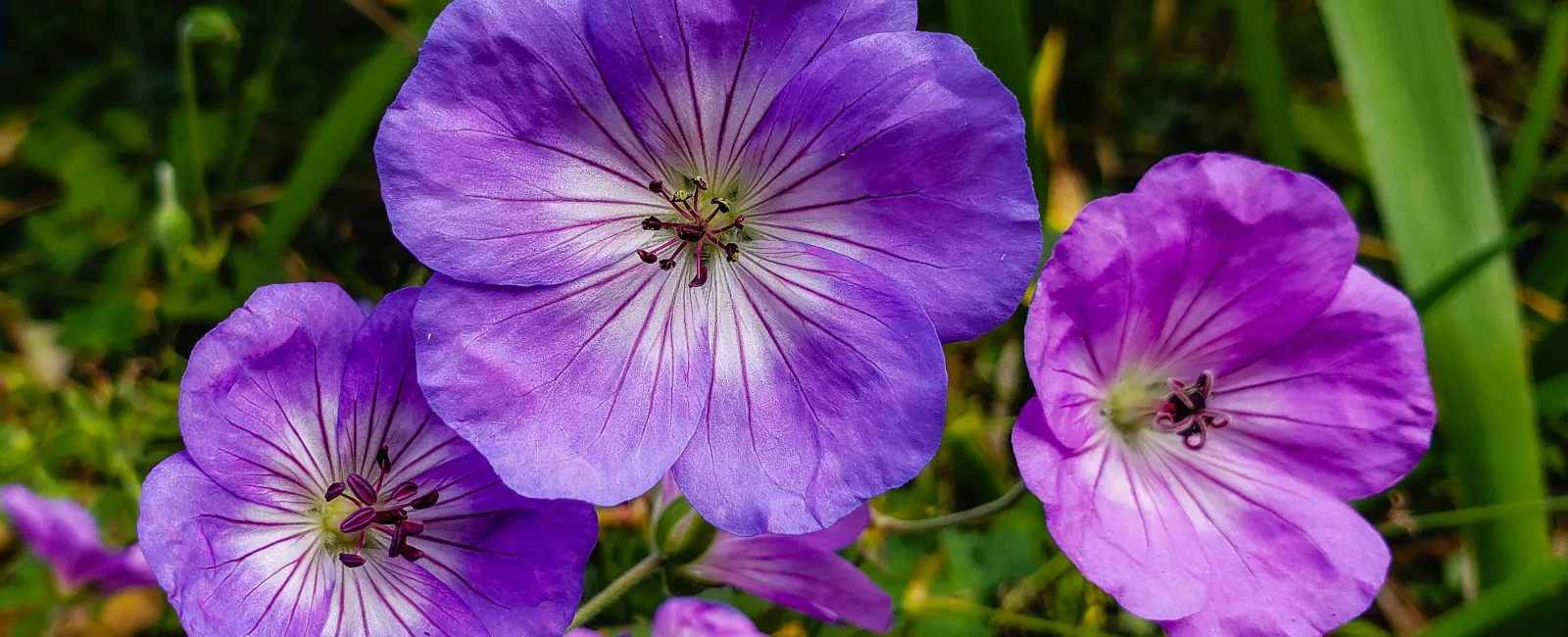Viola flowers are bold, bright, and beautiful. They don't require much care, and they "play well" with other plants, so they're a great addition to your home garden.
If you're interested in restoring your landscaping, or you're planning a landscape renovation, violas are a great choice. In this article, we'll discuss the basics about violas, their care, when to plant them, and much more.
You'll have all of the information that you need to get out there, and start planting today! So start looking at some viola flower pictures, and think about how you can use them in your garden.
About Viola Flowers - The Basics

Most violas are either short-lived perennials, usually lasting a maximum of two years, or annuals which will die every year, after their growth cycle is over. However, most violas "self-seed". After they die, their seeds will be mixed into the soil - and they'll regrow next year, without you having to do a thing! Violas are also great flowers to plant in the fall.
There are a huge number of viola flowers. They're mostly derived from the Sweet Violet - Viola odorata. Derivatives of this flower include Garden Violas, viola tricolors, and "Johnny-Jump-Ups".
Other common viola flowers include Horned Violets, and the Garden Pansy - which is not a pansy at all, but a viola called "viola wittrockiana". Most violas flower profusely, and last throughout the entire spring and summer.
How Viola Flowers Look - Color, Growth, And More
Most violas have slightly scalloped, heart-shaped leaves, though some more exotic species may have other shapes
They are mostly acaulescent - meaning that the flowers appear to rise directly from the ground, with little noticeable stems or foliage. Typically, violas will have five flowers - four of them are swept upwards, while one broad, smaller petal points downward.
Viola flower cultivars tend to be quite small, compared to pansies and other common garden flowers. However, some do grow to be quite large, with heights of up to 8 inches, and a flower diameter of 2-3 inches. Mostly, this depends on the particular genus that is planted.
Where To Plant Viola Flowers
Violas, like their common counterpart the pansy, are cool weather plants. They love the sun - not the heat. Because of this, they should be planted in areas where they are protected from the heat of the sun in the mid-afternoon, particularly if you are in a warmer area, as defined by the USDA zones.
Even if you are in a warmer area, though, you can still plant violas. You simply must water them more often, and provide them with enough mulch to protect the flowers from the heat of the sun.
If you are using pre-grown "plug plants", find an area that is shady in the late afternoon heat. It's best to keep the soil moist, and enhance it with organic matter like mulch, compost, leaf litter, or any other fertilizer that you have on-hand. Plants should be placed between 6-8 inches apart.
When To Plant Viola Flowers
As mentioned, violas tend to thrive the most in cooler weather. It's best to plan them either in the cooler late autumn, or the early spring. If you plant them when it's already warm, they may wither in the heat.
If you're growing your own Viola flowers, it's best to start them indoors, and grow them until they reach about 3-4 inches in height, which may take several weeks. Then, plant them outside. Mid-September to early October is typically the best time to do so. If you choose to plant in the spring, March to April is usually the best time, as long as it has not frosted recently in your area.
Caring For Viola Flowers - Our Top Tips

- Water regularly - Viola flowers need regular watering. However, don't water them until the moisture in the soil has all been absorbed. Wait until it's dry before watering them again.
- Mitigate the stress of the hot sun - Planting violas in a shady area is a great idea, but regular watering and extra mulch can help them deal with high summer heat if they're too exposed.
- Revive plants by cutting them back to 3-4 inches - If your violas are "leggy" and spindly, cut them back down to 3-4 inches, and ensure that you're watering them enough, and that they have enough nutrients in the soil.
- Deadhead plants to extend the flowering period - You can simply pinch blooms off at the stem, if they become faded during the flowering period. This will ensure you get the most possible blooms from each viola flower.
If you follow these tips, you'll be able to maximize the flowering time of each of your viola plants, and enjoy a beautiful garden, even into the hot summer months!
Get Started With Viola Flowers Today - Exercise Your "Green Thumb"!
Violas are easy to plant, and are available in a stunning variety of different colors. And because they tend to reseed themselves, a single planting of violas can re-grow for years to come.
So get out there, grab some viola seeds or seedlings today, and start building a more beautiful, aesthetically-appealing flower bed today!
Landscaper SEO by RedBrick





